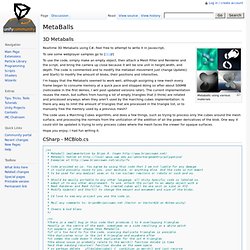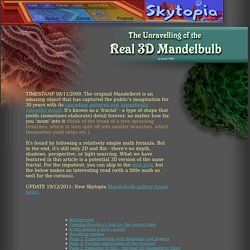

Circle Packing. A circle packing is an arrangement of circles inside a given boundary such that no two overlap and some (or all) of them are mutually tangent.

The generalization to spheres is called a sphere packing. Tessellations of regular polygons correspond to particular circle packings (Williams 1979, pp. 35-41). There is a well-developed theory of circle packing in the context of discrete conformal mapping (Stephenson). The densest packing of circles in the plane is the hexagonal lattice of the bee's honeycomb (right figure; Steinhaus 1999, p. 202), which has a packing density of (Sloane's A093766; Wells 1986, p. 30). Surprisingly, the circular disk is not the least economical region for packing the plane. Wells (1991, pp. 30-31) considers the maximum size possible for identical circles packed on the surface of a unit sphere.
Using discrete conformal mapping, the radii of the circles in the above packing inside a unit circle can be determined as roots of the polynomial equations circles of diameter . MetaBalls. Metaballs using various materials Realtime 3D Metaballs using C#, Feel free to attempt to write it in Javascript, To see some webplayer samples go to [[1]] To use the code, simply make an empty object, then attach a Mesh Filter and Renderer and the script, and bring the camera up close because it will be one unit in height,width, and depth.

The code is commented and to modify the metaball movement just change Update() and Start() to modify the amount of blobs, their positions and intensities. I'm happy that the Metaballs seemed to work well, although assigning a new mesh every frame began to consume memory at a quick pace and stopped doing so after about 500MB (noticeable in the first demos, I will post updated versions later). The code uses a Marching Cubes algorithm, and does a few things, such as trying to process only the cubes around the mesh surface, and processing the normals from the unitization of the addition of all the power derivatives of the blob. CSharp - MCBlob.cs. Mandelbulb: The Unravelling of the Real 3D Mandelbrot Fractal. Opening Pandora's Box For the Second Time ur story starts with a guy named Rudy Rucker, an American mathematician, computer scientist and science fiction author (and in fact one of the founders of the cyberpunk science-fiction movement).

Around 20 years ago, along with other approaches, he first imagined the concept behind the potential 3D Mandelbulb (barring a small mistake in the formula, which nevertheless still can produce very interesting results - see later), and also wrote a short story about the 3D Mandelbrot in 1987 entitled "As Above, So Below" (also see his blog entry and notebook). Back then of course, the hardware was barely up to the task of rendering the 2D Mandelbrot, let alone the 3D version - which would require billions of calculations to see the results, making research in the area a painstaking process to say the least. So the idea slumbered for 20 years until around 2007. Full size shown here. Is this merely a fool's quest?
Mandelbulb (order 8) WOW! Resulting renders.